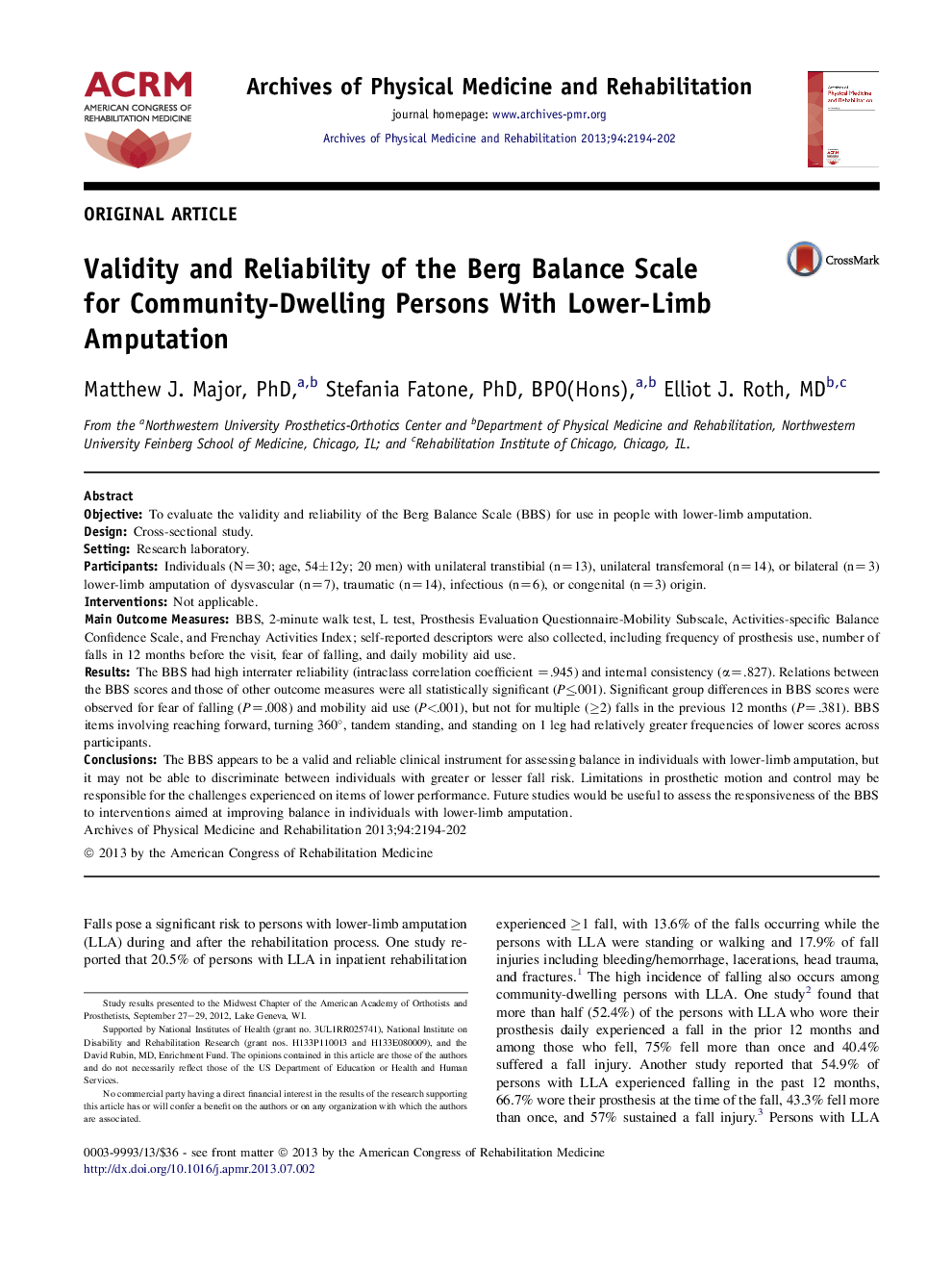| کد مقاله | کد نشریه | سال انتشار | مقاله انگلیسی | نسخه تمام متن |
|---|---|---|---|---|
| 3449124 | 1595705 | 2013 | 9 صفحه PDF | دانلود رایگان |

ObjectiveTo evaluate the validity and reliability of the Berg Balance Scale (BBS) for use in people with lower-limb amputation.DesignCross-sectional study.SettingResearch laboratory.ParticipantsIndividuals (N=30; age, 54±12y; 20 men) with unilateral transtibial (n=13), unilateral transfemoral (n=14), or bilateral (n=3) lower-limb amputation of dysvascular (n=7), traumatic (n=14), infectious (n=6), or congenital (n=3) origin.InterventionsNot applicable.Main Outcome MeasuresBBS, 2-minute walk test, L test, Prosthesis Evaluation Questionnaire-Mobility Subscale, Activities-specific Balance Confidence Scale, and Frenchay Activities Index; self-reported descriptors were also collected, including frequency of prosthesis use, number of falls in 12 months before the visit, fear of falling, and daily mobility aid use.ResultsThe BBS had high interrater reliability (intraclass correlation coefficient =.945) and internal consistency (α=.827). Relations between the BBS scores and those of other outcome measures were all statistically significant (P≤.001). Significant group differences in BBS scores were observed for fear of falling (P=.008) and mobility aid use (P<.001), but not for multiple (≥2) falls in the previous 12 months (P=.381). BBS items involving reaching forward, turning 360°, tandem standing, and standing on 1 leg had relatively greater frequencies of lower scores across participants.ConclusionsThe BBS appears to be a valid and reliable clinical instrument for assessing balance in individuals with lower-limb amputation, but it may not be able to discriminate between individuals with greater or lesser fall risk. Limitations in prosthetic motion and control may be responsible for the challenges experienced on items of lower performance. Future studies would be useful to assess the responsiveness of the BBS to interventions aimed at improving balance in individuals with lower-limb amputation.
Journal: Archives of Physical Medicine and Rehabilitation - Volume 94, Issue 11, November 2013, Pages 2194–2202